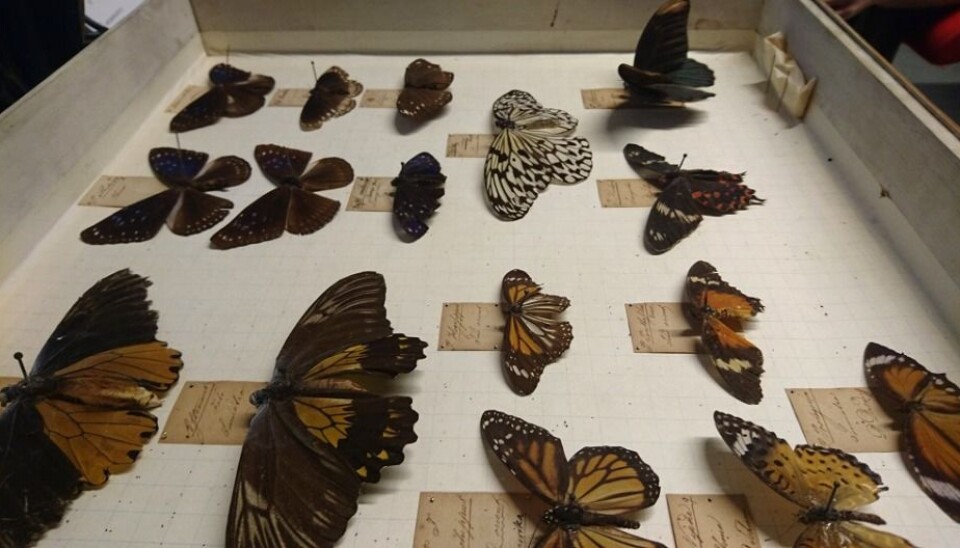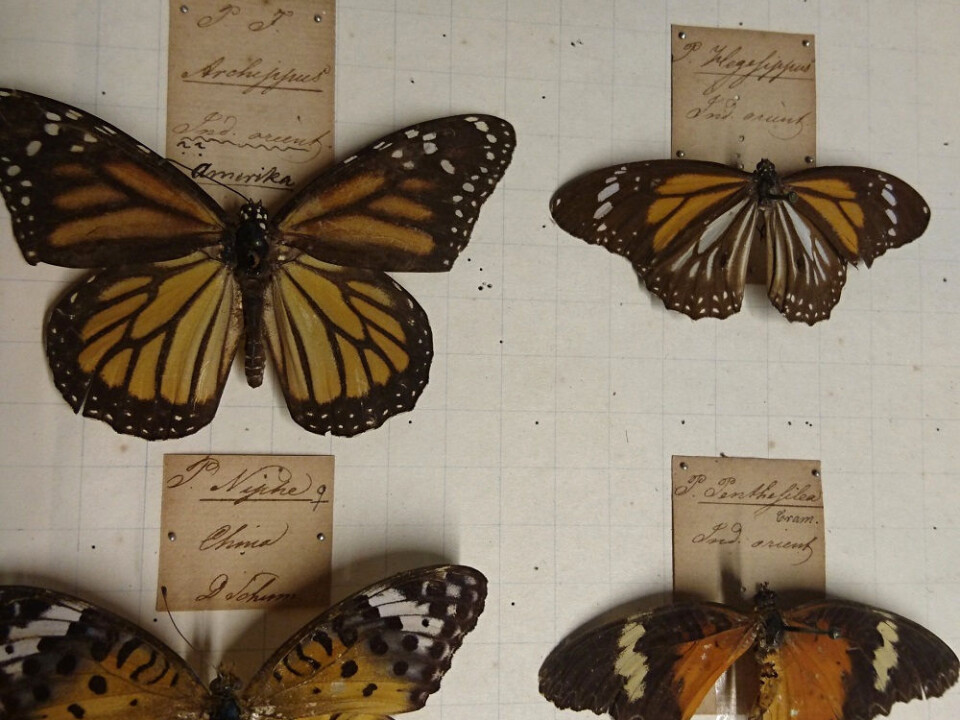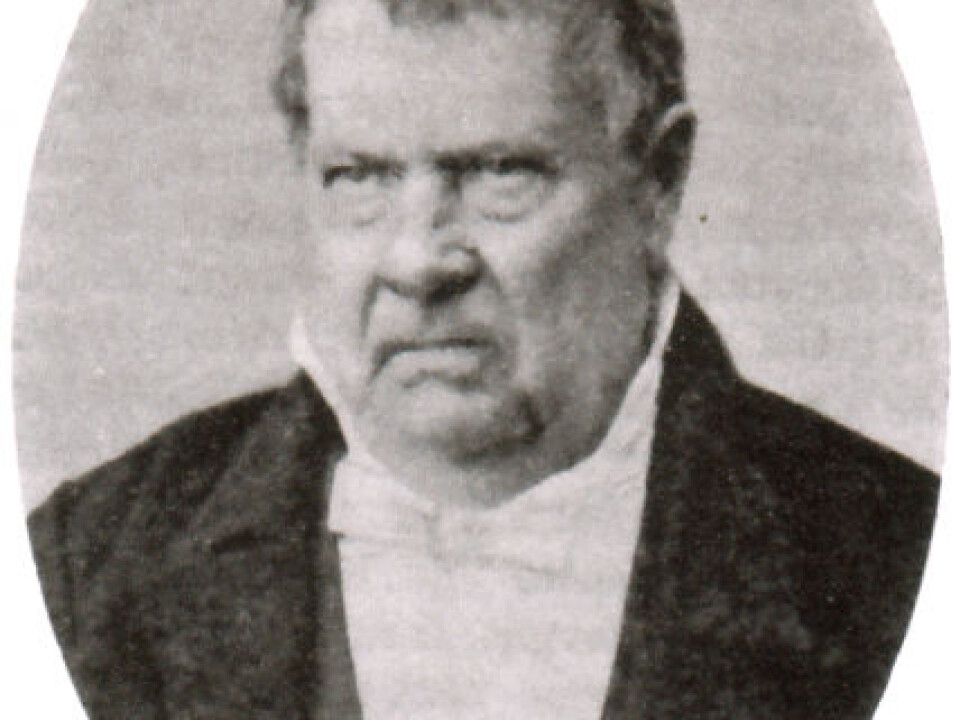
Two-hundred-year old butterflies allow research to take wing
It’s been two centuries since these butterflies have flown in their tropical haunts. But the collection the insects come from played a critical role in establishing the study of entomology in Norway.
Twenty-five glass boxes full of butterflies and other bugs might not seem that special in the context of a university museum. But these particular butterflies were collected by eager amateurs 200 years ago, partly from the farthest flung corners of Denmark’s former tropical colonies.
They were passed from collector to collector — one of whom subsequently drowned in a tragic ship accident — and finally found their way to Oslo. There, they formed the foundation for Norway’s then-fledgling entomological research.
“There’s a lot of systematics and entomological history in these boxes,” said Geir E. E. Søli, an associate professor and insect researcher at the University of Oslo Natural History Museum. “This was the start of the entire insect collection at the University of Oslo.”
The naming of things
The insects inside the cases helped initiate the study of systematics in Norway, where researchers followed up on the pioneering work of the famous Swedish natural scientist Carl Linnaeus and started to categorize animals and plants, draw them and name them.

But how did these boxes filled with brightly coloured, exotic insects end up at the University of Oslo's Natural History Museum in the first place?
The story begins in the late 1700s in Copenhagen.
Naturalist celebrities
Copenhagen at this time was home to two prosperous naturalists and collectors: the Danish-Norwegian civil servant Niels Tønder Lund and Count Ove Ramel Sehestedt. Together they built a large insect collection.
The collection contained insects from the world over, but especially from the former Danish colonies in Southeast Asia, such as Sumatra, and what was then called Trankebar in India.

But while the two men collected these beautiful specimens, they did not actually catch the insects themselves.
Instead, that was the work of Dagobert Carl de Daldorff, who visited the tropical places to catch the butterflies whose colourful wings now grace the glass boxes in Søli’s office.
Daldorff’s name is written in ornate lettering on some of the labels pinned under a number of the butterflies.
Tønder Lund and Sehested’s collection was the largest of its kind at the time, and attracted some of the Western world’s then-most famous zoologists, including the great Danish entomologist Johan Christian Fabricius. Fabricius was a student of the even-more famous Carl Linnaeus.
From Denmark to Norway's first university
Another individual who studied the collection was Peter Vogelius Deinboll. Deinboll had studied medicine, but had to give up his studies when he realized he could not stand the sight of blood, Søli said.
“The young Deinboll and Niels Tønder Lund developed a warm friendship, and as a result of this contact, Deinboll was given a large number of insects by his older mentor,” Søli said.
But then tragedy struck.
In 1809, Tønder Lund was asked by Crown Prince Fredrik of Denmark-Norway to participate in an interim government commission in Norway.
However, the ship that he took from Jylland in Denmark in January that year sank off the coast of Norway, and Tønder Lund drowned.
But Tønder Lund’s insect collection, now the property of Deinboll, lived on. Deinboll moved to Norway where he took a degree at the newly established University of Christiania in 1815—the year after Norway shifted from Danish to Swedish hands.
With him came the insect collection, including the butterflies that, 200 years later, now occupy the glass boxes at the Natural History Museum. Eventually, the university bought Deinboll’s collection.
5000 insects
But the journey of the butterflies and other insects was not yet over. After they were acquired by the university, they were scattered in different storage areas, and no one quite knew where they had gone.
“The collection that the butterflies came from was supposed to encompass four cabinets with around 5,000 insects, butterflies, beetles, true bugs, flies and wasps, but the numbers are uncertain,” says Søli.
At the end of the 1930s, a conservator, Leif Reinhardt Natvig, decided to search through the storage magazines and warehouses at the Natural History Museum in Oslo to see what he could find.
And he found a great deal, including the insect collection.
“They had been stored here and there, but he managed to locate the cases where they were, and put them in the same order that they had once been in,” Søli said.
“We still don’t have a full overview of the value of the Deinboll collection, but I think there are some treasures still to be found there,” he said.






























